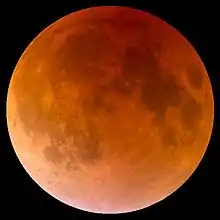November 2020 lunar eclipse
A penumbral lunar eclipse took place on 30 November 2020. A penumbral lunar eclipse occurs at full moon when the Moon passes through Earth's penumbral shadow.
| Penumbral Lunar Eclipse 30 November 2020 | |
|---|---|
 9:24 UT, from Minneapolis, Minnesota | |
 The moon perceptibly dimmed as it passes through the Earth's southern penumbral shadow | |
| Series (and member) | 116 (58 of 73) |
| Duration (hr:mn:sc) | |
| Penumbral | 4:20:59 |
| Contacts | |
| P1 | 7:32:21 UTC |
| Greatest | 9:42:49 |
| P4 | 11:53:20 |
The penumbra caused a subtle dimming on the lunar surface, which was only visible to the naked eye when about 70% of the Moon's diameter had immersed into Earth's penumbral shadow.[1]
Visibility
It was visible after sunset from east Asia and Australia, and before dawn in North and South America.
 Simulated view of earth from center moon at greatest eclipse with Infrared clouds rendered to show visibility. |
 Visibility map |
Related eclipses
Eclipses of 2020
- A penumbral lunar eclipse on January 10.
- A penumbral lunar eclipse on June 5.
- An annular solar eclipse on June 21.
- A penumbral lunar eclipse on July 5.
- A penumbral lunar eclipse on 30 November.
- A total solar eclipse on December 14.
Lunar year series
| Lunar eclipse series sets from 2020–2023 | ||||||||
|---|---|---|---|---|---|---|---|---|
| Descending node | Ascending node | |||||||
| Saros | Date | Type Viewing |
Gamma | Saros | Date Viewing |
Type Chart |
Gamma | |
111 |
2020 Jun 05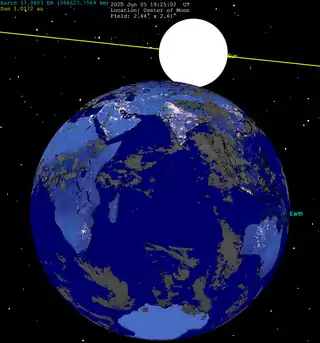 |
Penumbral |
1.24063 | 116 |
2020 Nov 30 |
Penumbral |
-1.13094 | |
| 121 | 2021 May 26 |
Total |
0.47741 | 126 | 2021 Nov 19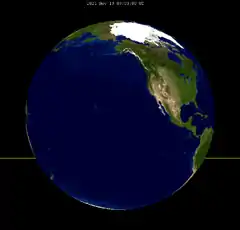 |
Partial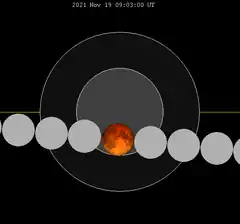 |
-0.45525 | |
| 131 | 2022 May 16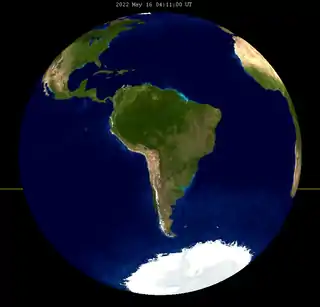 |
Total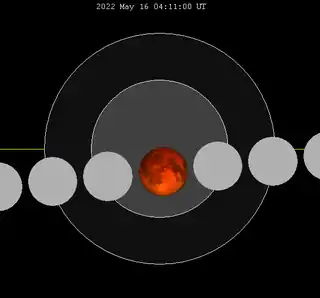 |
-0.25324 | 136 | 2022 Nov 08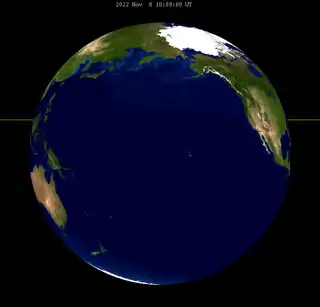 |
Total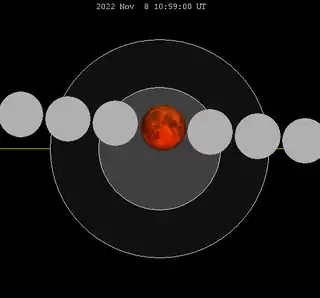 |
0.25703 | |
| 141 | 2023 May 05 |
Penumbral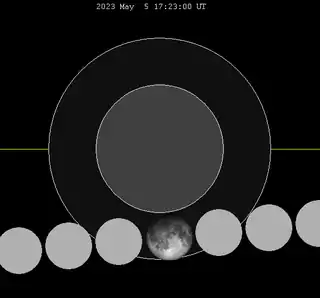 |
-1.03495 | 146 | 2023 Oct 28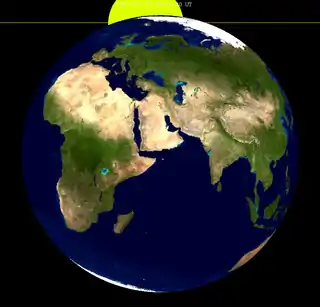 |
Partial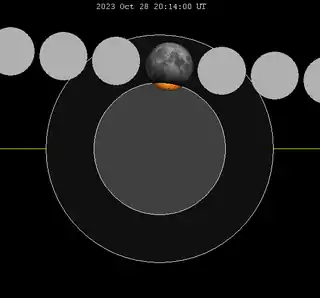 |
0.94716 | |
| Last set | 2020 Jul 05 | Last set | 2020 Jan 10 | |||||
| Next set | 2024 Mar 25 | Next set | 2024 Sep 18 | |||||
Saros series
It is part of Saros cycle 116.
Half-Saros cycle
A lunar eclipse will be preceded and followed by solar eclipses by 9 years and 5.5 days (a half saros).[2] This lunar eclipse is related to two partial solar eclipses of Solar Saros 123.
| November 25, 2011 | December 5, 2029 |
|---|---|
 |
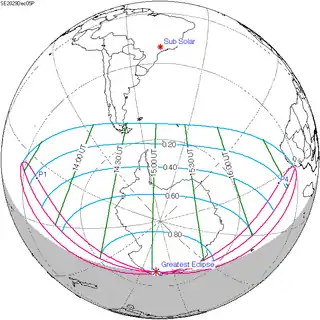 |
See also
- List of lunar eclipses and List of 21st-century lunar eclipses
References
- H. Mucke, J. Meeus (1992). Canon of Lunar Eclipses -2002 to +2526 (3rd ed.). Astronomisches Büro Wien. p. V.
- Mathematical Astronomy Morsels, Jean Meeus, p.110, Chapter 18, The half-saros
External links
- Saros cycle 116
- 2020 Nov 30 chart: Eclipse Predictions by Fred Espenak, NASA/GSFC
| Wikimedia Commons has media related to Lunar eclipse of 2020 November 30. |
This article is issued from Wikipedia. The text is licensed under Creative Commons - Attribution - Sharealike. Additional terms may apply for the media files.



